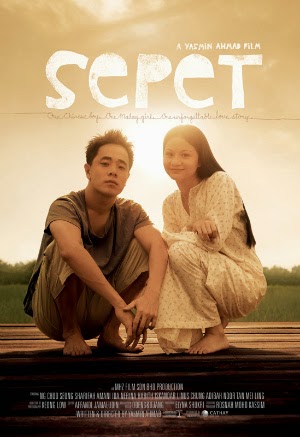3 Idiots (2009) an Indian film directed by Rajkumar Hirani
started with the point of view of the narrator, Farhan Qureshi, telling a story
of him and also a great friend he and Raju knew from university. Farhan and Raju have been searching so hard
for their best friend Rancho who has disappeared after the graduation. When
they received clues of his whereabouts, they start a road trip to get their
best buddy back. For this film, I am going to discuss about the aesthetic of Indian cinema by selecting a few examples from the film, '3 Idiots'. The
aesthetics of Indian cinema are mostly the singing and dancing part, the Indian
traditional costumes, the traditional ritual ceremony, the typical plot of rich
meets poor, distinct dominance, and etc.
First, let’s talk
about the performance art. In “3 Idiots”, there are scenes of songs and dancings,
which are significant in Indian cinema, no matter what genre or story plot it
is. According to David Courtney (2012), no Bollywood film would be complete
without a song and dance between the hero and heroine. When Pia falls for Ranchoo,
she imagines herself singing “Zoobie Doobie” and dancing in duet with Rancho.
Meanwhile, having a group of dancers dancing the classical or folk dance with
the main character(s) is also a signature part of Indian films.
Secondly, the Indian costumes are also the important part of
Indian films. In India, even though western style of contemporary clothing like
gowns, jeans, shirts tops can be seen in most Indian films, due to the
influential of western culture, Indian film producers still maintain their
traditional clothing for some scenes, and contemporary film like ‘3 Idiots’ is
no exception. Indian traditional clothing is essential as different types of
clothing represent the status and ethnicity of a person. Traditional clothing is
also essential for different types of rituals, like wedding ceremony or funeral.
For example, when the real Rancho is mourning the death of his father together
with his family members and friends, they all wear pale white clothing during
the funeral. Another example would be, when Pia is getting married, she wears
traditional Indian wedding dress instead of western style of wedding gown.
Thirdly, the plot structure of Indian films is very much
different from other foreign films that follow the Three Act Structure. Most
films have their climax somewhere at the second half of Act two or Act three in
Three Act Structure. But for Indian films, they divide the story into few
parts, and each part with its own climax. So the whole structure of Indian film
is like continuously up and down until the ending. For the story of ‘3 Idiots’,
it is divided into few parts telling different stories of each characters and
how the three best friends get into one trouble into another one, and they
solve them one by one.
In nutshell, the whole film gave me a huge impact when it
brings up the topic of suicide and critiques the Indian educational system and also common society thinking, as I did not expect to see these in Indian films. Instead of family drama, Indian
action movie, typical rich meets poor romance plot, “3 Idiot” presents a story
which is very much different from other Bollywood films by putting the “problems”
on the screen. So, no more escapist genre of films that gives three hours of
brightly colored fantasy to some people (Redlich. M, 2012), “3 Idiot” presents
the “cruel” side of the reality on how people lost their enthusiasm, freedom or
even their lives for something, just because of the social norms, educational
system and also the economy. For
example, Farhan’s father insists Farhan to study Engineering while Raju as the
eldest son in the family has to bear the responsibility of taking care of the
family by study hard and earn a lot of money for the family, which make the
whole film very close to reality.
Reference:
Ciecko, A.T. (2006) Contemporary Asian Cinema. New York:
Berg, Oxford International Printing Ltd.
Courtney, D. (2012). Bollywood Dance. Retrieved August 19,
2014, from http://chandrakantha.com/articles/indian_music/nritya/bollywood.html
Goswami, N. (n.d.). The Empire Sings Back: Asthetics,
Politics, and Postcolonial Whimsy. Retrieved August 20, 2014, from http://www.contempaesthetics.org/newvolume/pages/article.php?articleID=545
Lovgren, S. (2004). Bollywood: Indian Films Splice Bombay,
Hollywood. Retrieved August 19, 2014, from http://news.nationalgeographic.com/news/2004/01/0121_040121_bollywoodfilms.html
Three-Act Narrative Structure(n.d.). Retrieved August 20,
2014, from http://www.indiana.edu/~audioweb/T206/three-act.html


.png)




